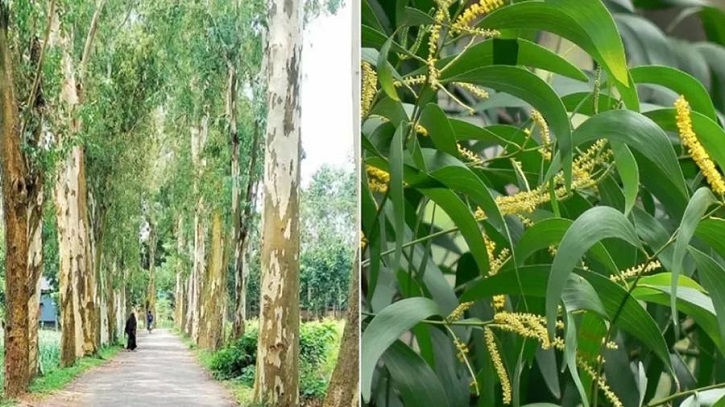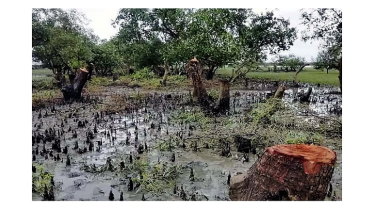
Botanists have long warned that the Acacia auriculiformis, locally known as akashmoni, absorbs excessive water and leaves surrounding soil dry, while its fallen leaves, bark, and branches release acidic compounds that make the land toxic. Despite knowledge of its harmful effects, the Forest Department continues to plant the species in different areas.
A recent visit to Sripur in Gazipur revealed around 7,500 short-term saplings planted across nearly three hectares of land under the Kawraid Beat Office of the Forest Department. Although a signboard indicated the presence of diverse species such as chukrassia, jam, jarul, amla, bahera, and shil koroi, the land was found to contain only akashmoni saplings.
While local forestry officials claimed the saplings were planted during the 2023–24 season, nearby farmers said the trees had been planted very recently. In contrast, Forest Department officials insisted no new plantations had been undertaken, saying the trees belonged to older afforestation projects.
In May this year, the Ministry of Environment, Forest, and Climate Change officially banned the planting and sale of eucalyptus and akashmoni to protect biodiversity and the environment. However, four months after the order, plantation of these harmful trees has not ceased.
According to Forest Department data, block plantations of eucalyptus and akashmoni cover 183,115 acres of land across the country, while strip plantations stretch across 46,708 kilometers. Officials said these plantations are being gradually phased out.
Chief Conservator of Forests Amir Hossain Chowdhury maintained that there is no scope for planting akashmoni saplings after the ban. “If anyone is found planting these harmful trees, it will be treated as a violation of the government order, and action will be taken,” he said.
Experts, however, remain concerned. Professor Dr. Ashfaq Ahmed, Chairman of the Department of Botany at Dhaka University, explained that not all trees are beneficial for the environment. “Certain trees are suitable only for certain ecosystems. While akashmoni may meet the demand for fast-growing timber, its negative impact on the environment must be carefully considered,” he said.





